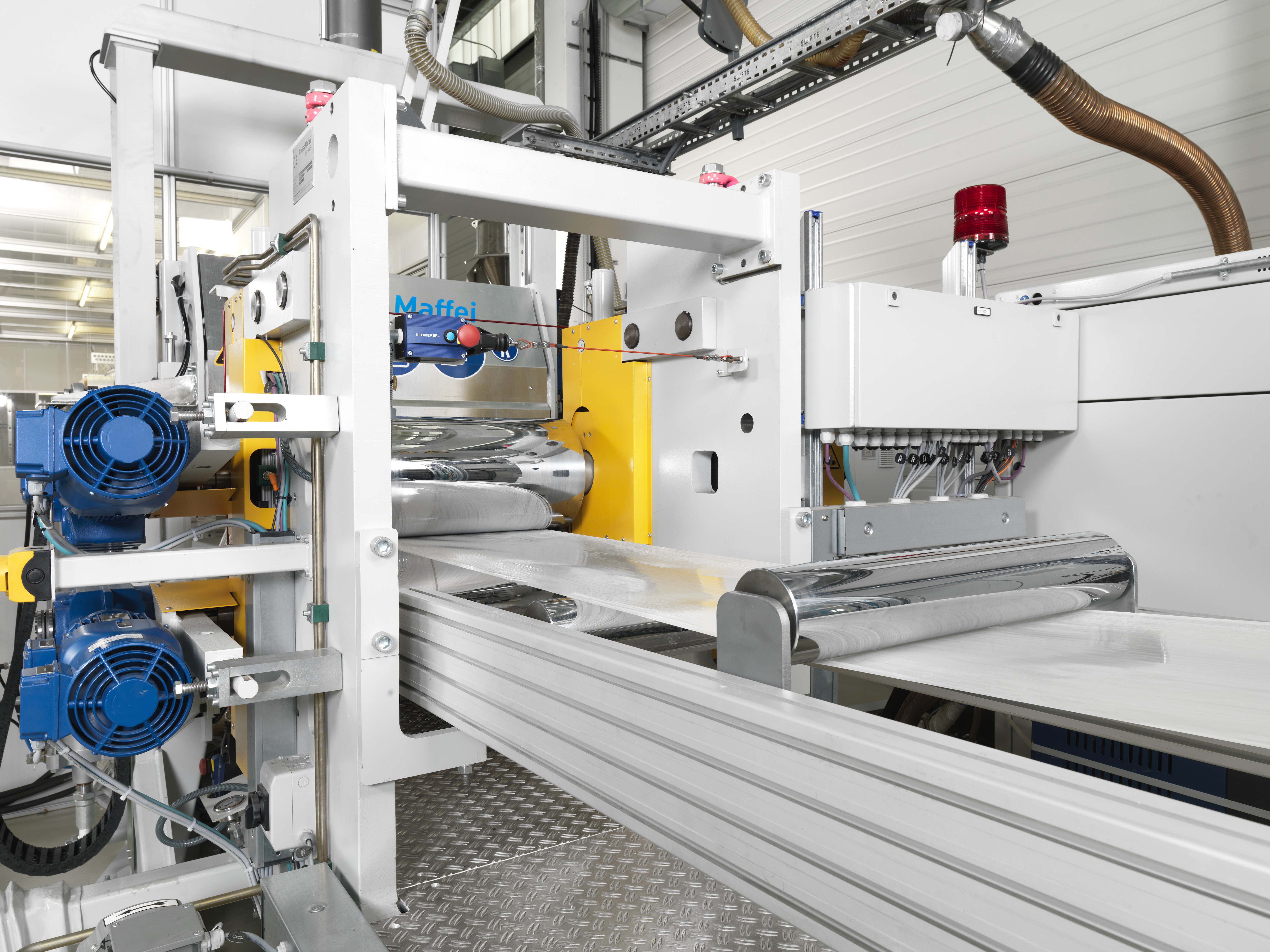For lightweight design applications, either very expensive carbon fiber reinforced polymer composites (CFRP) with very good mechanical properties or less cost-intensive glass fiber-reinforced plastics (GFRP), whose properties are not as good, are used at the present time. This poses a major challenge, especially for safety-related structural components used in the mass production of automobiles, since economical semi-finished products as well as optimal mechanical performance are required in such applications. For this reason, the Fraunhofer Institute for Microstructure of Materials and Systems IMWS is conducting research in a joint project with the DOMO Engineering Plastics GmbH (DOMO EP) on new thermoplastic semi-finished fiber composites that meet both of these requirements.


Endless fiber-reinforced plastics (EFRP) are perfectly suited for use in heavy duty lightweight design applications since they can be optimally adapted to the existing load paths in the component and exhibit very good mechanical properties in combination with low material densities. In spite of their advantageous range of properties, EFRP has not been used extensively thus far in structures subject to very heavy loads with the exception of a few applications in the aviation, sport equipment, and automobile industry. Thermosetting CFRP, which cannot be used economically in mass production yet, is currently used in the small and medium-sized serial production of highly stressed structural components – for example in the fuselage of the Boeing 787 or the life module of the BMW i3.
One problem with this approach is the relatively long processing times required for its manufacture due to the long curing time required by the reactive resins, the high cost of the (still) very expensive carbon fibers, and the inefficient use of quasi-isotropic CFRP fabric panels due to the large amount of scrap produced when cutting to size. It is therefore necessary to use other, more efficient thermoplastic composites (TPC), possibly reinforced with glass fibers, in the high-volume production of components. However, it has only been possible thus far to use these materials in components subject to low or medium levels of stress, for example in interior components or body panels. The reasons for this can be found in their moderate mechanical properties as well as in the inadequate application temperature range of the widely used polypropylene matrix composites.
This is the starting point for the Fraunhofer IMWS and DOMO EP: with the help of the polyamide-based (PA-based) polymer matrix developed by DOMO EP for tapes with unidirectionally aligned fibers (UD tapes), economical and high quality semi-finished tapes will be developed for application in lightweight automobile designs in particular. The direct impregnation of the fibers into the melted polymer to manufacture tape planned for the project offers major economic and mechanical advantages over the powder and film impregnation methods currently used in the market for the production of tape. Furthermore, innovative tape production methods characterized by high material efficiency, less waste when cutting, and the ability to design components according to the load paths, will be researched and tested in the field. Based on a demonstration component, the project will then verify its potential for use in material-efficient designs and in the lightweight design and mass production of the newly developed semi-finished products.
To realize this project successfully, the scientist will divide the project into two phases: in the first project phase, the microstructural mechanisms arising in PA matrix systems and during the production of semi-finished endless glass fiber-reinforced GF/PA tapes will be studied. For this purpose, a PA matrix will be developed that, through targeted manipulation, will exhibit better mechanical properties due to lower moisture absorption in combination with excellent process-related properties, leading to a high quality impregnation process.
“After we have studied and tested the corresponding PA matrix material together with DOMO EP, we want to develop a semi-finished GF/PA tape that exhibits a higher fiber volume content, among other improved properties, in a second step. To achieve this, we want to specifically influence the melt viscosity of the matrices and the fiber impregnation process as well as optimize the fiber/matrix bond”, said Ivonne Jahn, the project leader for semi-finished products at the Fraunhofer IMWS. To obtain improved mechanical properties as compared to the current technology, the researchers also want to experiment with the use of different types of glass fiber. If this project is a success, then a production-ready and reproducible manufacturing process will be implemented for the newly developed GF/PA semi-finished tape to ensure it is ready for industrial use.
Other goals include validation of the semi-finished products developed on a demonstration prototype as well as researching and testing innovative, material-efficient tape designs. “With the help of the hybrid injection molding process, in which the endless fiber-reinforced tape laminate inserts designed based on the load path are combined with short or long fiber-reinforced injection molding material, we will examine the economical and industrially compatible production of parts with complex geometries. We will be focusing in particular on studying material-efficient and near net-shape designs with low material waste”, said Dr. Matthias Zscheyge, the Components project leader at the Fraunhofer IMWS.
The project was established in the High Performance and Transfer Center for Chemical and Biosystems Technology and is financed with funds from the European Regional Development Fund (ERDF).